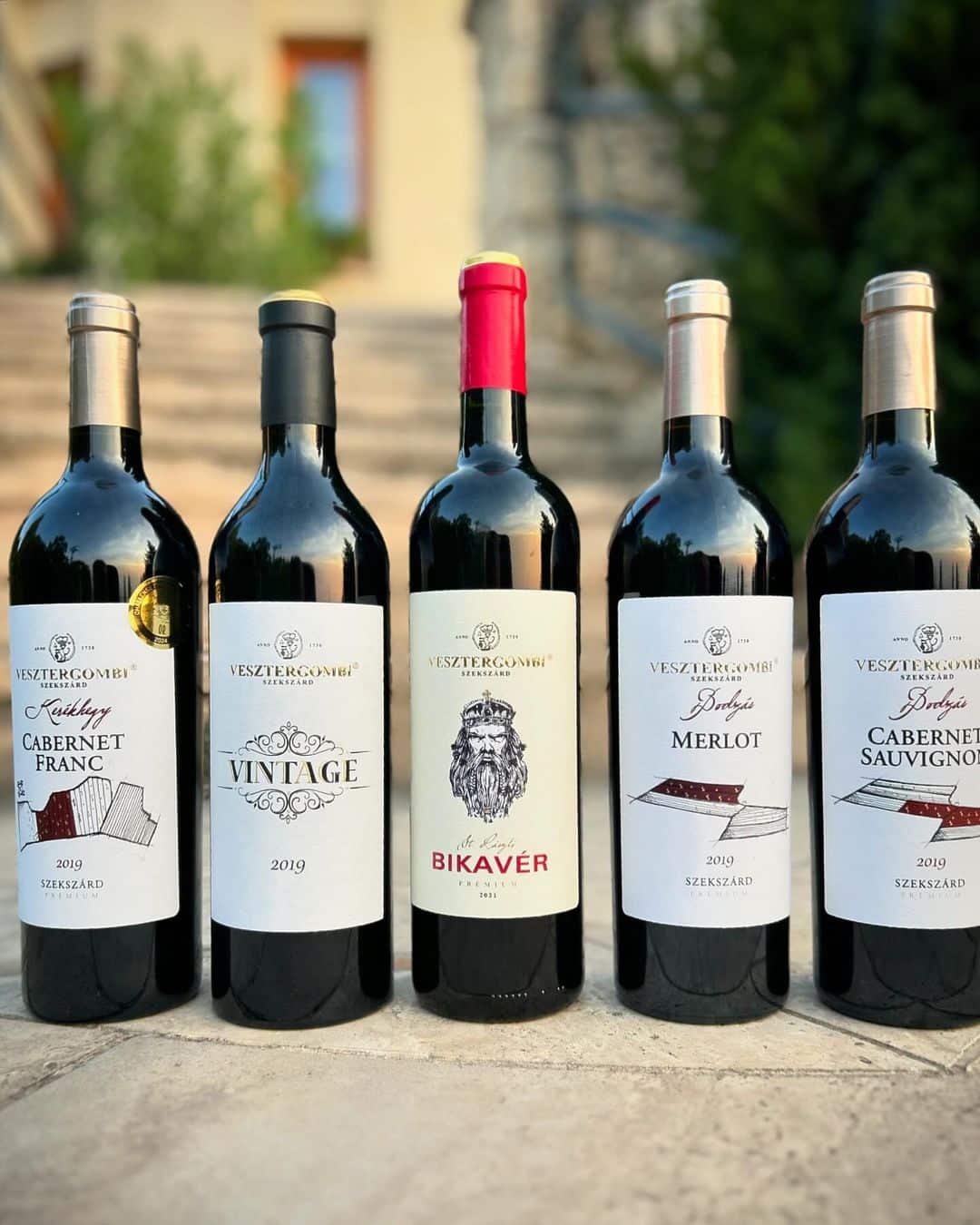The Tolcsva Wine Museum
The Tolcsva Wine Museum
Written by Gergely Somogyi from Tokaj Today
www.tokajtoday.com
The region’s largest and most comprehensive museum wine repository is nothing like the usual old wine collections that are more about the packaging, that is, old bottles, labels and capsules, than the wine itself – it is very much a living museum that bears testimony to the amazing longevity of the legendary Tokaji Asz..
Lying on the side of an insignificant dead-end street on the outskirts of Tolcsva, the unmarked entrance to the National Treasury’s wine museum looks similar to any other local stone-clad cellar portal and betrays nothing of the vintage Tokajis worth million held in the bowels of the ancient cellar behind. With some of its winding, narrow galleries dating back to the 13th century, this cellar is exactly what one imagines a Tokaji museum cellar to be like: narrow, dimly-lit passages with a low ceiling and lined on both sides with dusty shelves crammed with thousands of bottles enveloped in a thick, dark-greyish veil of the indigenous cellar mould, Cladosporium cellare. The interconnected vaults of the former Constantin Cellar, Adriányi Cellar, Upper Rákóczi Cellar and Liebmann Cellar (the latter not used as a museum) total close to 1000 metres in length in a very intricate, multi-level layout. The constant temperature of 11°C to 12°C (52°F to 53.5°F) with 90 per cent humidity allows bottles to be stored standing upright – as is normal in any Tokaj cellar.
This unique vault is most often referred to as the Wine Museum, Constantin Cellar, or, not totally accurately, as the Pogácsás Cellar. The latter name enshrines the memory of János Pogácsás, the role model for those who actually started the collection. Pogácsás – the Aszú expert of the Borkombinát, the state-run wine-making monopoly of the communist era – was keen on preserving exceptional vintages for later generations in an age that cared little about historical values. He regularly bottled old Aszús to safeguard them in the cellar where he spent most of his professional career, a cellar which was thus named after him. Today, the actual cellar where Pogácsás worked is in fact owned by Oremus Winery, the local a liate of Vega Sicilia.
Pogácsás’s example was followed by István Kovács, Lajos Csibrik and Sándor Bodnár, three middle managers of the Borkombinát, who in 1973 began secretly bottling old Aszús (starting with the exceptional 1963 and 1964 vintages) and laying them down in the Constantin Cellar, a relatively remote spot out of sight of the senior management, as István Kovács himself explained to The Tokaji Journal. This was a de facto illicit practice which could, however, be pursued unnoticed within what was a vast organisation employing thousands of sta and managing over 280 cellars with around 70,000 barrels throughout the wine region. The collection grew rapidly and steadily. The three men even had additional wooden shelves made using the funds of the company under the pretext of having to store reference samples from the laboratory. No-one ever actually took the trouble of going down to nd out that the ‘samples’ on those shelves had never come from the lab. Pogácsás was one of the few who knew what was going on and even gave Kovács’s team a couple of bottles from his collection.
When the repository had reached around 200,000 bottles by the end of the seventies, the three men knew it would be impossible to keep it a secret much longer. By either simply disclosing it to top management or having it discovered by chance, they would however have risked serious punishment (even imprisonment) for they could have well been accused of stealing national(ised) property despite the fact that what they had been doing was actually just transferring wine from one company cellar to another. They had to let the management learn about the collection in a ‘controlled’ manner, but how?
Then came the year-end management meeting on 30th December 1979. The usual formalities were followed by a New Year’s Eve address and then a few bottles of Tokaji sparkling wine were opened and glass flutes clinked (yes, sparkling wine was a common product in Tokaj at the time). During an informal chat CEO Pál Kapás asked István Kovács and his colleagues where they were going after the event. “To taste our sparkling wines in Bodrogolaszi” was the answer. There was no refusing the CEO’s request to join the team for what would turn into a prolonged sparkling wine tasting campaign, drawing to an end around midnight in Tolcsva. As spirits were high, Kovács thought the hour had come to disclose the collection to Kapás. He furtively instructed some of his people to run ahead and light candles all over the museum cellar, not electrifed at that time, and then turned to the CEO asking him if he wanted to be shown something special. He did. The ‘initiated’ kept their breath as a fairly tipsy Kapás descended down the time-worn wooden steps. When the sight of the thousands of mould-clad bottles aglow in the light of dozens of candles made his jaw drop in amazement, the three men knew they had got away with it.
Early in the new year the cellar was formalized as a wine museum and the wines were entered into the official inventory of the company. The collection was to continue – with the approval of the senior management.
Hidden Present
The current archive spans 34 vintages between 1895 and 1988, 23 of which are top-rated, i.e. marked with five stars in the Tokaj vintage chart, and nine are indicated as second best with four stars. There are only two vintages rated below four stars in the museum. (It should be noted, however, that Tokaj vintage ratings are based on the quantity of botrytised berries produced in any given year, and as such, cannot be regarded as a direct indicator of quality.)
The best-represented style is 5 puttonyos Aszú with over 132,000 bottles from vintages between 1906 and 1988. The number of 6 puttonyos Aszús is excess of 74,000 and a little more than 12,000 wines were recorded in the Aszúesszencia (‘above-6p’) category at the time of bottling. The oldest vintage dates back to 1895 – just 37 bottles of
6p Aszú. The most ‘populous’ vintages in the collection are 1972, 1964 and 1963 (all top-rated) each with between 34,000 and 37,000 bottles, while the year 1922 is represented by a mere 4 bottles. Most of the missing vintages are of
the pre-war period. Besides 5p and 6p Aszús, there are nearly 24,000 4p, as well as a couple of thousand 3p Aszús, and dry and sweet Szamorodnis. (It is a point of interest that some 30 bottles of dry Furmint also made their way into the collection somehow, but since such wines rarely survive decades of storage, they do not hold any significant value.)
What you may immediately notice upon taking a closer look at the bottles is the absence of labels as well as dust and cellar mould that do not correspond to the age of some of the wines. This is related to exactly what makes
this museum more than just any repository of items of mere historical value, for all the wines stored here are perfectly drinkable. Bottles are checked regularly and where a cork is found to show signs of deterioration, the wine is uncorked, tasted, then rebottled and re-corked. This must normally be repeated every 15 to 30 years for each and every one of the over quarter of a million bottles held in the museum. Wines found to have a fault on sensory evaluation (an extremely rare occurrence) are simply thrown out. The mould cover is necessarily removed in the process and is estimated to take 10 to 25 years to fully overgrow the new bottles.
The Tolcsva Wine Museum belongs to Hungary’s National Treasury and surprisingly little known to the general public that has until now been denied any chance of visiting what has been mostly used to impress high-ranking politicians, foreign diplomats and a few celebrities only. However, the museum has recently been brought under the management of the Tarcal-based Research Institute for Viticulture and Oenology in the Tokaj Wine Region (TRIVO), (re-)established in August 2011. TRIVO is not only planning to improve the current bottle registration and identification system, but also to open the museum to visitors and offer exclusive tastings of select vintages in the cellar. Tasting prices will be set commensurate with the value of wines offered, for instance around EUR 130 for tasting a line-up of five samples such as a sweet Szamorodni 1983, a 3p Aszú 1957, a 4p Aszú 1956, a 5p Aszú 1968 and a 6p Aszú 1972. The aim is not to make the cellar a destination for mass tourism, but to provide access for those willing to pay for what will surely be a memorable and worthwhile experience.
Comments ( 4 )
-
Trackback: dultogel promo
-
Trackback: fortnite cheats free
-
Trackback: ผลิตกระเป๋าผ้า
Comments are closed.







Trackback: Morpheus8 รีวิว